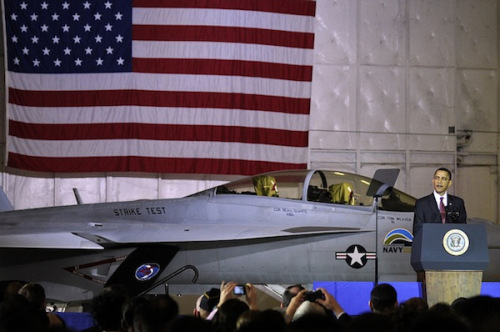| When | Saturday, July 20, 2013, 10am – 6pm |
|---|---|
| Where | throughout Skagit County |
| Category | Arts & Entertainment |
| Audience | Kids, Teens, Singles, College Students, Dads, Moms, Seniors, Families |
| Cost | free |
| Description | Join Skagit Artists Together as we celebrate our 10th Annual Studio Tour. 29 artists are participating throughout Skagit County in several mediums. Download the brochure at www.skagitart.com and head out for a day or weekend in beautiful Skagit Valley. |
| Link | www.skagitart.com |
Author: Kim Kalliber
Two American Indian Art Organizations Partner to Benefit Native Artists
Source: Native News Network
SANTA FE – The Southwestern Association for Indian Arts and the Institute of American Indian Arts have signed a Memorandum of Understanding to continue to improve and increase educational and professional opportunities available to American Indian artists at the Santa Fe Indian Market and IAIA. The partnership provides a formal framework for program collaboration and mutual services.
SWAIA COO Dr. John Nez and IAIA President Dr. Robert Martin
“It’s a no brainer. SWAIA and IAIA have long had aligned interests, and together, we will produce a positive environment for all Native artists,”
says Dr. John Torres Nez, Chief Operating Officer of SWAIA.
“It’s a way of highlighting the positive impact that IAIA has had on SWAIA in terms of the number of alumni participating in Indian Market,”
IAIA President Dr. Robert Martin says.
“It also highlights the importance of SWAIA in terms of providing a venue for our alums, faculty and staff to showcase and market their talents.”
Although IAIA focuses on contemporary art and media, while SWAIA promotes both traditional and novel art forms, both organizations seek to preserve Native American arts and culture and provide a supportive platform to their respective artists.
These changes will happen in the coming months: SWAIA and IAIA will co-host the State of Native Arts Symposium on Friday, August 16, and the Membership Breakfast in the Park on Saturday, August 17. Both events are part of Indian Market Week. SWAIA and IAIA are excited to present these programs, and eager to strengthen and increase collaboration in the future.
SWAIA is an advocate for Native American arts and cultures and creates economic and cultural opportunities for Native American artists by producing and promoting Santa Fe Indian Market Week, the finest American Indian art and cultural event in the world; cultivating excellence and innovation across traditional and non-traditional art forms; and developing programs and events that support, promote, and honor Native artists year round.
SWAIA is a non-profit organization, and keeps no portion of the sales made by artists during Santa Fe Indian Market Week.
For 50 years, the Institute of American Indian Arts has played a leading role in the direction and shape of Native expression. As it has grown and evolved into an internationally acclaimed college, museum and community and tribal support resource through the Center for Lifelong Education, IAIA’s dedication to the study and advancement of Native arts and cultures is matched only by its commitment to student achievement and the preservation and progress of the communities they represent.
Ramp It Up, Skateboard Culture in Native America
Opens August 10 at the Tulalip Hibulb Cultural Center
Oregon Considers Tuition-Free Program for College Students
Source: Indian Country Today Media Network
As the student-debt crisis looms, Oregon is considering a solution of its own, a plan called “Pay it Forward, Pay it Back.”
The plan would allow students to attend state schools without taking out any loans or paying anything up front, as long as they agree to pay up to three percent of their future salaries into a fund annually for 24 years.
“We have to get way out of the box if we’re going to get serious about getting young people into college and out of college without burdening them with a lifetime of debt,” Mark Hass, a Democratic state senator from Beaverton, Oregon, told the Wall Street Journal.
Hass championed a bill that creates a study committee charged with created the pilot program, which was passed unanimously in the state’s Senate on July 8 and had already gained House approval.
The legislature will now decide in 2015 whether to implement the pilot program or not.
According to the Journal, the idea came from the Economic Opportunity Institute, a nonpartisan group out of Washington state. Oregon is the first to take action on the idea.
“If it’s done correctly it’s essentially creating a social insurance vehicle for enabling access to higher education,” John Burbank, the institute’s executive director said.
The plan comes at a pivotal time. Public funding for higher education has plunged, tuitions are high, and total student-loan debt in the United States is more than copy trillion. And, on July 1, interest rates on government tuition loans doubled to 6.8 percent because the Senate didn’t block the increase.
Oregon has 10 federally recognized tribes and according to the 2012 Census, an American Indian population of 1.8 percent.
Read more at https://indiancountrytodaymedianetwork.com/2013/07/09/oregon-considers-tuition-free-program-college-students-150345
Engineering student turns fashion designer with statement Ts

Jared Yazzie hand paints a T-shirt in his studio as he prepares for a fashion show.
By Shondiin Silversmith, Navajo Times
Jared Yazzie started out his college career with the intent of becoming an engineer. In fact, he received several scholarships to help him along the way at the University of Arizona. After two-and-a-half years of working toward his degree, Yazzie, 24, made a drastic change: he switched his major to graphic design.
In the fall of 2009 Yazzie started designing his own T-shirts.
 “I was just doing my own design work,” Yazzie said.
“I was just doing my own design work,” Yazzie said.
That is when he developed the brand OxDx for his designs. It stands for “Overdose.” He said the name came from how he sees the world because everyone is overdosing themselves with unnecessary things.
“I always thought of a T-shirt as billboarding,” Yazzie said. “I just want a way to interact with people, and I think T-shirts are the most interactive tool. I call it a walking billboard.”
Yazzie was doing a lot of design work but he didn’t get the idea of selling his T-shirts until his friends started offering him money for them.
“They paid me 25 bucks,” he said, “and I designed a shirt.”
He sold his first shirt design to 25 people, whom he calls his “dream team.” The design on his first shirt was of a Navajo child’s head with a distorted dream bubble floating above him and a bandana that says “dreamer.”
“After that I had enough money to come up with my next design,” Yazzie said.
He left UA and moved to Phoenix in 2010 where he continued to design his shirts.
“Everything is either hand-drawn by me or graphically altered by me. I do all the graphics for my stuff,” Yazzie said. Each of his T-shirts is either screen-printed or hand-painted.
Yazzie learned the screen-printing process in his brother’s garage from a friend in 2011. When he first started, his designs would be sent out to screen shops and professionally printed, but does the printing himself today.
He would sell his shirts at flea markets, youth conferences, art shows and fairs. He continued marketing his product in this manner until he turned OxDx into a real business in 2012 and developed his OxDx online clothing line.
“Everything before that I was just selling on the rez,” he said. “It’s something I care about and it was just growing.”
Yazzie said he has over 20 T-shirt designs “out there that are just floating around.” Each of his shirts is a limited edition.
“Everything I do has a message and I want people to think. I have some pretty strong messages,” Yazzie said, noting his shirts have been known to start conversations. “It’s a way for Natives to be fashionable and make a statement while doing it.”
Yazzie said the designs he produces are some really fun stuff, but he also likes to touch on Native American issues.
“It’s nice to have a design that meshes well with what everyone is wearing, but it’s a Navajo design,” Yazzie said as he described one of his shirts called the “Music Tee.”
This design depicts a traditional Navajo woman in full attire with a pair of headphones on. Within the headphones is the Navajo wedding basket design.
“I try to do my best to get everything accurate,” he said, “which is really hard.”
Another design by Yazzie is called “Not A Trend.” He said he produced this design in reaction to media representations of Native Americans.
He said it seems that it’s becoming more and more common for people to dress up like Indians for fun, using as an example the headdress-wearing model from a recent Victoria’s Secret fashion show.
“It’s just kind of crazy,” Yazzie said. “It’s like racism that’s going on today and it shouldn’t be. Nobody understands it from a Native perspective and I was trying to bring that to light.”
As a way to do that he developed the hashtag “Not A Trend” so people can use it on Twitter and Instagram when they want to make a statement.
Yazzie said now that his clothing line is developed and his designs are becoming more popular his shirts have taken on fashion appeal.
“I’ve never seen a T-shirt brand do that. I love that I’m getting respect on a fashion level,” Yazzie said.
He’s even being invited to fashion shows – most recently at Arizona State University, and next in South Dakota at the end of the month.
Yazzie said his shirt “Native Americans Discovered Columbus” has shown up on the CNN and Rolling Stone magazine Web sites. On CNN his shirt was worn by a model for a story about the “Beyond Buckskin” fashion blog, and Rolling Stone showed his shirt on artist Nahko from Medicine for the People during a performance in Seattle, Wash.
Alongside his online clothing line Yazzie works for Express Screen Printing in Phoenix. He is also a student at Mesa Community College where he hopes to complete his degree in graphic design. He is originally from Holbrook, Ariz. and his parents are Kee and Shirley Yazzie. He is Ashiihi born for Todich’ii’nii.
For more information visit: www.oxdx.storenvy.com.
Rock Out Under The Stars At Tulalip Amphitheatre
A Pacific Northwest summer tradition – Rock Out Under the Stars at Tulalip Amphitheatre
Gretchen Wilson has had 13 hit singles on the Billboard country charts, 5 reaching the Top 10.
With 31 titles on Billboard, Clay Walker boasts 4 platinum and 2 gold albums.
Sunday, July 28: Peter Frampton & Kenny Wayne Shepherd
Frampton is one of the most celebrated guitarists in rock history; Shepherd is a young blues guitarist who has sold millions of albums.
Thursday, August 15: Sammy Hagar
The “Red Rocker”, an American music icon, has been inducted into the Rock and Roll Hall of Fame as a member of Van Halen.
Sunday, August 18: Melissa Etheridge
Rock singer, songwriter, guitarist, winner of an Academy Award for Best Original Song, and Double Grammy Winner.
Sunday, August 25: Foreigner
This British-American band is one of the world’s best-selling bands of all time. Mick Jones and Lou Gramm were just inducted into the Songwriters Hall of Fame.
Saturday, September 7: Doobie Brothers & America
The Doobie Brothers have been inducted into the Vocal Hall of Fame with hits like “Listen to the Music”; Grammy winners America has charted No. 1 hits like “A Horse with No Name” and “Sister Golden Hair”.
Tulalip Resort Casino also offers guest room/up close ticket packages. Both reserved seating and general admission concert tickets are available and can be purchased in person at the Tulalip Resort Casino Rewards Club box office located on the casino floor, or online at www.ticketmaster.com. Unless otherwise noted, the doors open at 5pm and concerts start at 7pm for all shows. All concert dates and times are subject to change. Guests must be 21 and over to attend.
Parents get a B+ for kids’ back-to-school shots in Snohomish County
Source: Snohomish Health District
SNOHOMISH COUNTY, Wash. –– More 5 and 6 year olds in Snohomish County had all the vaccines they needed to enter school last year, according to recent data released by the state Department of Health. For the 2012-2013 school year, 86.3 percent of local kindergarteners were up to date on their shots, better than past years and higher than the state average of 85.6 percent
Vaccines are required for school children because they prevent disease in a community setting. The rate of vaccination has continued to climb since an all-time low in 2008-2009
School districts report vaccination rates to the state. The highest immunization rates for all grades (K-12) in Snohomish County last school year were in Lakewood (94.8%) and Everett (94.7%) school districts.
A small percentage of families seek exemption from the vaccination requirement, an average of 5.3 percent in Snohomish County schools compared to 4.5 percent statewide for children entering kindergarten.
In 2011 the process for parents or guardians to exempt their child from school or child care immunization requirements was changed. Parents need to see a medical provider to get a signature on the Certificate of Exemption form for their child’s school. More information about the form and the law is available online at www.doh.wa.gov/cfh/Immunize.
Although exemptions are allowed for medical, religious, or personal reasons, the best disease protection is to make sure children have all their recommended immunizations. Children may be sent home from school, preschool, or child care during outbreaks of diseases if they have not been immunized.
Summer is a good time to make sure your children are up to date on required shots. The cost of childhood vaccines is subsidized by federal and state government so that every parent can choose to have their child protected without regard to cost.
Required childhood vaccines are available for the school year 2013-2014.
- · Two doses of chickenpox (varicella) vaccine or doctor-verified history of disease is required for age kindergarten through grade 5. Students in grade 6 are required to have one dose of varicella or parental history of disease.
- · The whooping cough (pertussis) vaccine, Tdap, is required for students in grades 6-12 who are 11 years and older.
Recommended vaccines also are available.
- · Varicella vaccine for children in grades 7-12 who have never had chickenpox.
- · Meningococcal vaccine for adolescents age 11-12. A second (booster) dose at age 16-18 if first dose was given at ages 11-15.
- · A three-shot series of human papillomavirus (HPV) for both adolescent boys and girls age 11 and older.
- · Children 12 months and older should receive hepatitis A vaccine, a two-shot series.
- · Flu vaccine for all people age 6 months and older.
Snohomish Health District promotes routine vaccination of children and adults.
Snohomish Health District’s Immunization Clinic will serve you if your family does not have a health care provider. A visit to a Health District clinic includes a check of your child’s record in the Washington Immunization Information System, the state’s immunization registry.
Parents should beat the rush by making appointments now with their child’s health care provider. At the Health District, parents can make an appointment during normal clinic hours at either the Lynnwood or Everett office.
A parent or legal guardian must accompany a child to the clinic, and must bring a complete record of the child’s immunizations. You need to fill out a Snohomish Health District authorization form to have another person bring your child to the clinic. Ask the clinic staff to mail or fax a form to you.
Health District clinics request payment on the day of service in cash, check, debit, or credit card. Medical coupons are accepted, but private insurance is not. The cost can include an office visit fee, plus an administration fee per vaccine. Reduced fees are available by filling out a request based on household size and income.
Teens also occasionally require travel vaccines for out-of-country mission work or community service. The Health District offers those immunizations and health advice for traveling in foreign countries.
Please call if you have questions, concerns or to schedule an appointment: SHD Immunization Clinic 425.339.5220.
Read more about the state’s vaccine requirements for school-age children and child care. Find more information about Washington’s school immunization data.
Established in 1959, the Snohomish Health District works for a safer and healthier community through disease
prevention, health promotion, and protection from environmental threats. Find more information about the Health District at www.snohd.org.
Back-to-school shots hours:
SHD Everett Immunization Clinic, 3020 Rucker Ave, Suite 108, Everett, WA 98201
425.339.5220
By appointment: 8 a.m.-noon and 1-4 p.m. Monday-Wednesday-Friday
SHD Lynnwood Immunization Clinic, 6101 200th Ave SW, Lynnwood, WA 98036
425.775.3522
By appointment: 8 a.m.-noon and 1-4 p.m. Tuesday and Thursday
NOTE: Both clinics will be closed on weekends and on Labor Day, Sept. 2.
Tuberculosis History Project in Snohomish County
Announcement of a Tuberculosis (TB) History Project in Snohomish County
The TB Voices Project for Snohomish County is looking for persons to share their tuberculosis (TB) stories with the community. Whether you or a loved one had TB, your story is important. Share your story on our website or contact us for a recorded interview.
The purpose of the TB Voices Project is to allow individuals from all generations throughout the county to tell their TB story, and in turn, these stories can help persons around the globe currently impacted by TB.
For more information go to www.Tbphotovoice.org or contact Project Director, Teresa Rugg at 360.862.9034, twrugg@frontier.com.
The TB Voices Project for Snohomish and King County is a project of TB Photovoice, in partnership with the Firland Foundation. Since 2006, TB Photovoice (based in Snohomish) has worked around the world to amplify the voices of individuals directly impacted by TB so that they, as well as their communities, can improve their overall health.
27th Annual Seafair Indian Days Pow Wow, July 19-21
Friday, Saturday & Sunday, July 19-21
Daybreak Star Indian Cultural Center, 3801 W. Government Way, Seattle, WA, Discovery Park
US Navy’s “Green Fleet” sparks praise and cynicism

By Lucy Wescott, Inter Press Service
The United States military, an organisation that consumes 90 percent of the country’s federal oil allowance, is trying to become a greener institution.
The U.S. Navy has said that by 2016 it will run one of its 11 carrier strike groups using biofuel. In a test run of the new approach in the Pacific Ocean, a novel mixture of jet fuel, algae and cooking grease powered FA-18 Super Hornets, a type of fighter aircraft.
Within a decade, half of the Air Force and Navy’s fuel needs will be met by alternative energy sources, according to Christopher Merrill, director of the International Writer’s Program at the University of Iowa.
Merrill, who penned an essay for Orion Magazine titled ‘The Future of War‘, suggested that with climate change posing an increasing threat to U.S. national security, another name for this pioneering strike group could be the Great Green Fleet.
The military also believes that the threat of climate change to U.S. security is not simply a temporary trend, Merrill said.
“I don’t view this as a one-off thing, I view this as somebody trying to look into the future, trying to figure out what (we) are going to have to do to defend the country,” Merrill said.
Climate change and security
In 2010, the Department of Defence recognised in its Quadrennial Defence Review (QDR) that climate change and energy will both play “significant roles in the future security environment”.
The military’s look towards a more sustainable future was confirmed by a report released by the Executive Office of the President last month, which affirmed U.S. President Barack Obama’s commitment to lower U.S. greenhouse gas emissions by 17 percent of 2005 levels by 2020.
The report rendered the effect of climate disasters difficult to ignore: last year was the second most expensive year on record for the United States, with 11 weather-related natural disasters costing over 110 billion dollars in damages.
Marcus King, associate research professor of international affairs at the George Washington University, believes that threats from climate change would affect not only the United States through phenomena such as sea-level rise and droughts but the rest of the world as well.
The United States ought to be concerned that other nations, including U.S. allies, “could be constrained because they don’t have (the) adaptive capacity (to deal with climate change),” King told IPS.
Some, such as journalist Thomas Friedman, believe that issues around food security in Syria were the catalyst for the uprising there that began two years ago. And as climate change causes more humanitarian crises, the U.S. Navy will continue to assist in disaster relief and recovery, King pointed out.
“Once you look at global climate change as a threat, Africa has the least resistance…(and) it’s of strategic importance to the U.S.,” King said.
The Department of Defence recognised the potential increase in the Navy’s response to disasters abroad, reporting in the QDR that climate change is one factor “whose complex interplay may spark or exacerbate future conflicts”, along with cultural tensions and new strains of diseases.
Good PR?
But Leah Bolger, formerly with the U.S. Navy and now a peace activist, believes the green move to be more a publicity stunt than a progressive statement signalling changing times.
“I spent my (twenty) years in the military ambivalent about what the military policies were in foreign policy. It was a job…I didn’t really question my part in the military machine,” Bolger told IPS.
Now, however, Bolger called the Navy’s decision to make one carrier strike group green by 2016 “laughable”.
“(The green move is) like a page out of a PR book – something they can put out in their public affairs office to say, ‘We’re so mindful of the environment,’” Bolger said.
Still, one additional advantage of the green move is that the potential demand for alternative fuels could create a new market, Merrill told IPS. Already tax credits are being granted to wind farms, according to him.
“Once that market gets established, it’s likely that you’ll see the kind of innovations that came in the wake of the invention of the Internet,” he predicted.
Nevertheless, a change in the military’s energy consumption doesn’t necessarily mean a change in the behaviour of Americans, who consumed 19 percent of the world’s total energy resources in 2010, according to data from the U.S. Energy Information Administration, despite comprising around five percent of the global population.
Even if Americans knew about the Great Green Fleet, Bolger said, it wouldn’t do much to change their habits.
While the Great Green Fleet doesn’t necessarily improve the operational abilities of the Navy, the impetus is noble, King said. “If they have the ability to create demand (for alternative fuels)… I think that’s great, as long as it’s consistent with national security, which it is.”













